Compact and elegantly built, this diminutive bird boasts a slender frame that sets it apart from its waxbill counterparts. Its upper plumage is adorned in a soothing olive brown hue, while its underbelly displays a striking blackish coloration marked with charming white spots.
Meet the Painted Finch:
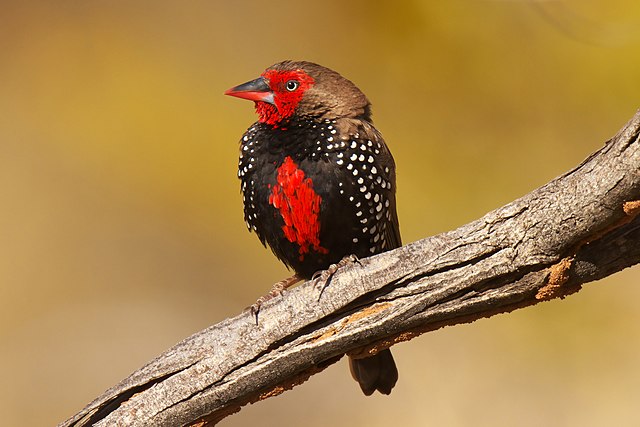
Photo courtesy of PotMart186/CC BY-SA 4.0
Description: The painted finch (Emblema pictum) are diminutive passerines measuring 10–12 cm in length and weighing around 11.5 g. Male painted finches display a striking red forehead and face, which contrast with their black breast. The middle of the male’s breast features a bright red patch, while the sides of the breast, belly, and flanks are adorned with black feathers bearing white spots. Their upper bodies and upper wings are reddish-brown, while the rump and uppertail coverts are predominantly red, creating a striking appearance in flight. Males possess a slender, pointed bill, characterized by a mostly black upper mandible with a red tip and a mostly red lower mandible adorned with light blue-grey patches on either side of the base. The iris of males is cream or off-white, and their leg coloration varies from dark brown to pinkish.
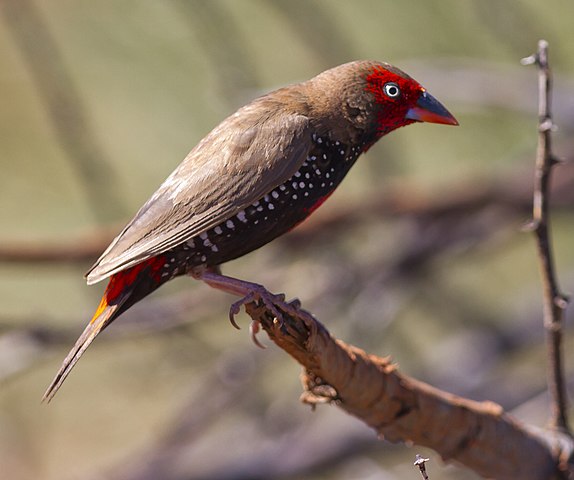
Photo courtesy of Jim Bendon/CC BY-SA 2.0
Females closely resemble males but exhibit duller red coloration on the face, which is limited to the lores, cheeks, and around the eyes. The red patch on the breast is also less vibrant compared to males, as are the generally duller brownish-black underparts, which feature more pronounced spotting. Female bills are similar to those of males but typically display less red on the upper mandible. The iris of females is cream or off-white, and their legs can range from dark brown to pinkish.
Juvenile painted finches share similarities with females but showcase duller, browner underparts. They lack the red facial coloration found in adults, and their bills are black, which gradually becomes paler, almost pinkish, on the lower part. Juvenile eyes are typically gray-brown.

“painted finch” by Graham Winterflood is licensed under CC BY-SA 4.0.
These charming birds can be encountered in various parts of Australia, including Western Australia, Northern Australia, Queensland, and South Australia. Notably, in 2007 and 2008, a significant influx of painted finches made their way into western New South Wales, where they have since been observed breeding, suggesting the establishment of a resident population.
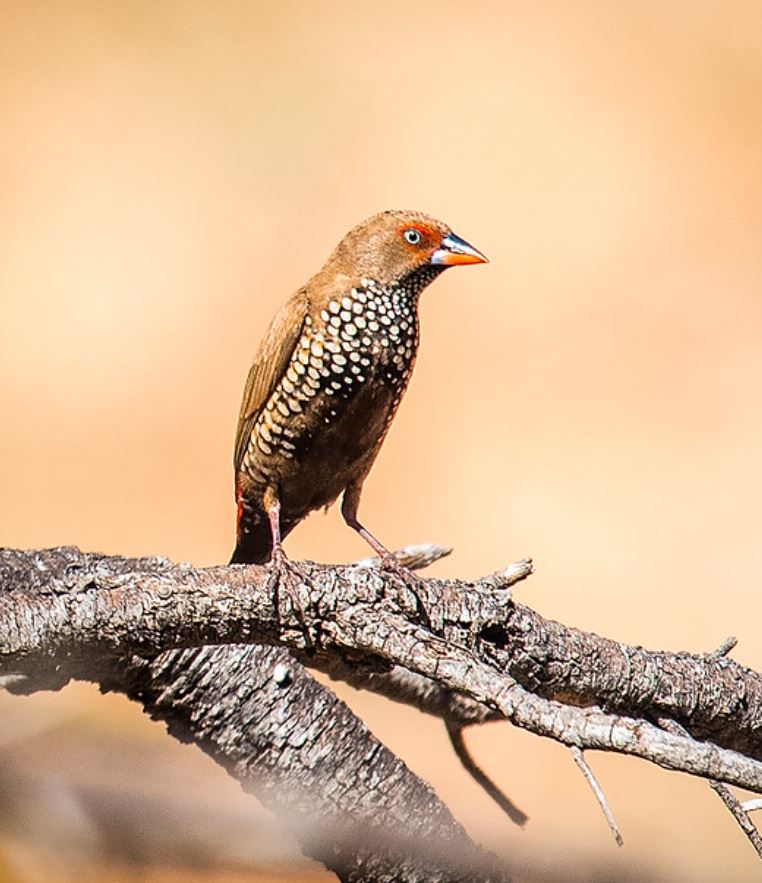
“Painted Finch” by PaulBalfe is licensed under CC BY 2.0. (cropped)
Painted finches thrive in arid and semi-arid regions, favoring rocky landscapes blanketed with spinifex grass.
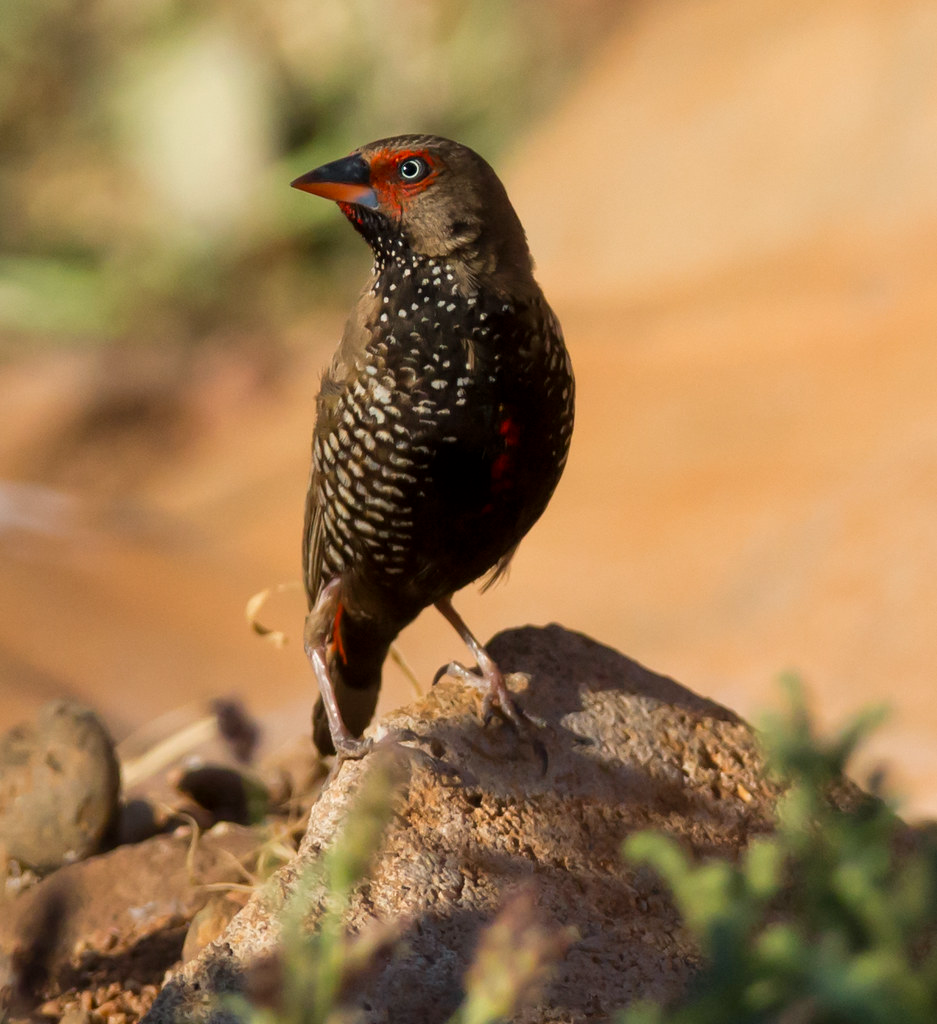
“painted firetail_2” by Jim Bendon is licensed under CC BY-SA 2.0.
Diet: Painted finches are primarily insectivores and predominantly feed on grass seeds from spinifex (Triodia) species. They may occasionally consume fruits and blades of grass. These finches forage on the ground, hopping and bouncing among rocks and tussocks of grass to gather fallen seeds. While captive birds have been observed sally-striking flying termites and gleaning aphids from vegetation, feeding on insects in the wild has not been widely documented.
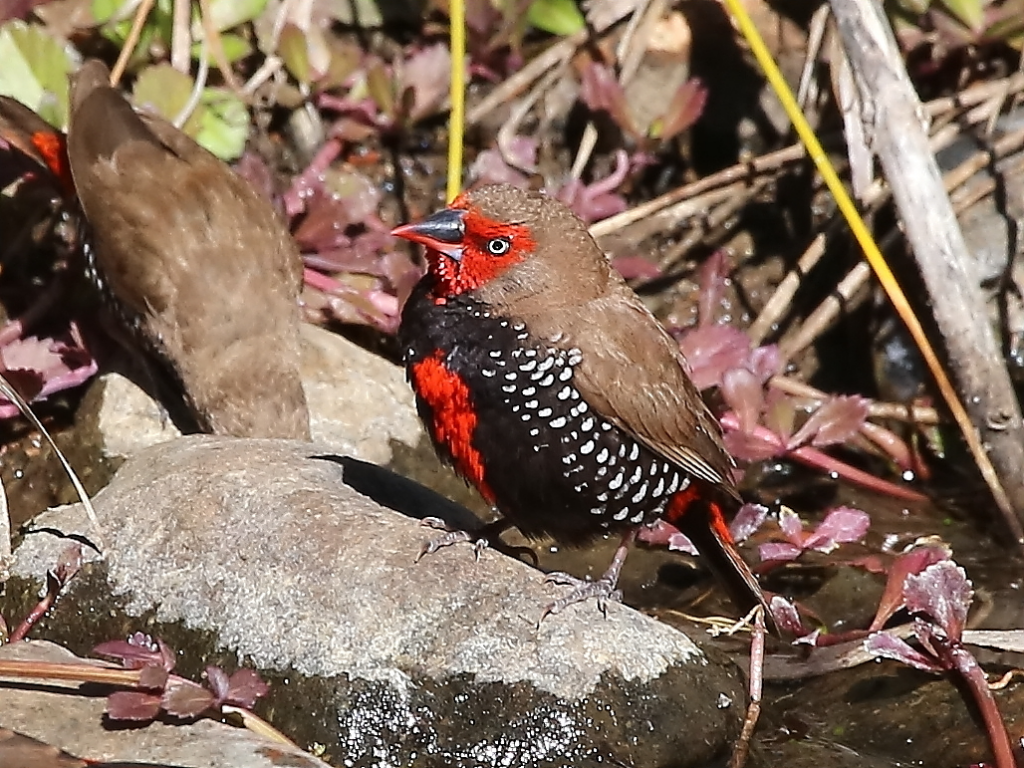
“painted finch” by Graham Winterflood is licensed under CC BY-SA 4.0.
Reproduction: Painted finches breed throughout the year under suitable conditions, with records of egg laying in all months except November and December. Nestlings have been observed between March and October. Courtship rituals typically take place on the ground and involve both sexes picking up and dropping twigs or other items. Alternatively, a greeting display may replace this behavior, characterized by the male singing to the female in a vertical posture, raising its body feathers, and pivoting its head from side to side.
Painted finches are monogamous and form simple pairs for nesting. They often select concealed clumps of spinifex grass as nesting sites. The nests are loosely constructed and feature a wide entrance, consisting mainly of spinifex stems but may also include other grass stems, twigs, or rootlets. The interior of the nest is often lined with feathers, plant down, hairy seeds, grass, wool, fur, or balls of fluff, with the entrance sometimes adorned with a piece of charcoal. Female painted finches lay clutches of 3 to
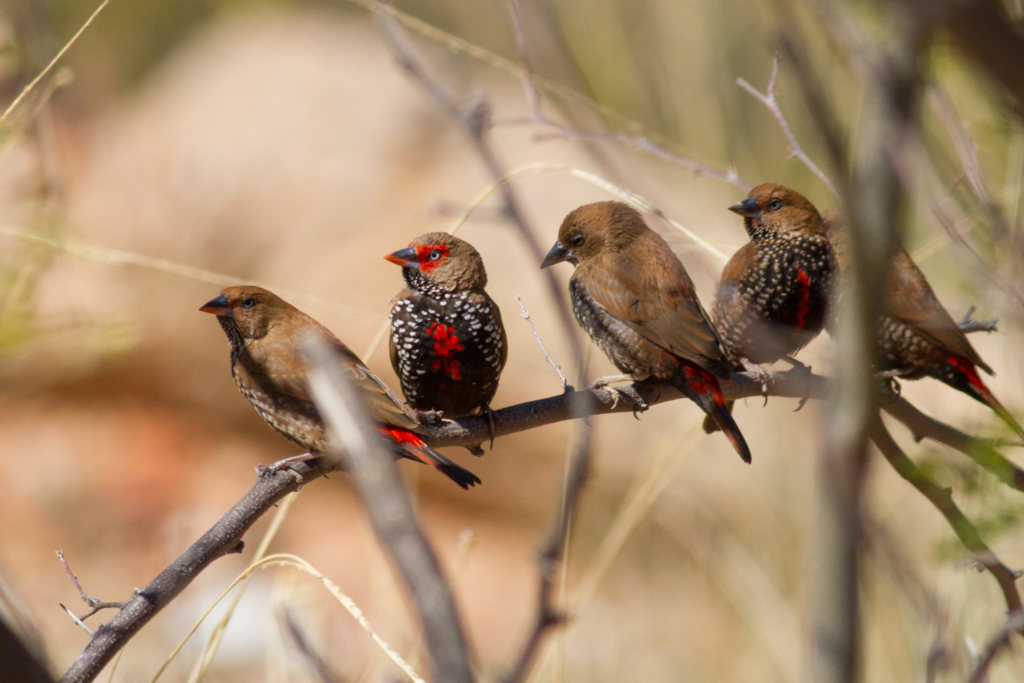
“painted finch” by Kym Nicolson is licensed under CC BY 4.0.
This bird is regarded as of least concern on the IUCN red list.
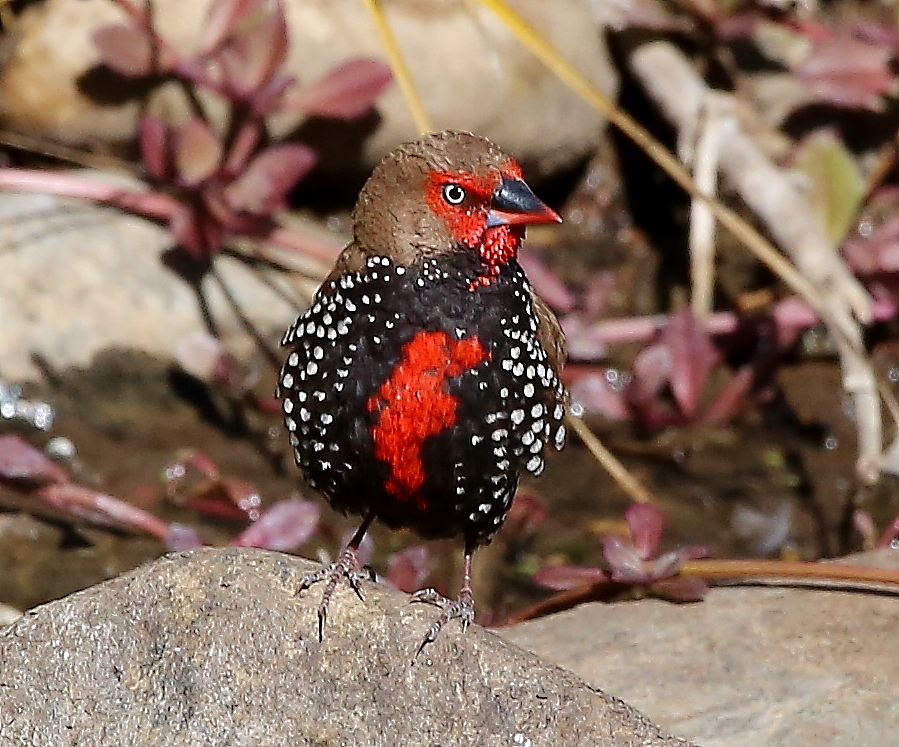
“painted finch” by Graham Winterflood is licensed under CC BY-SA 4.0.
Listen to this bird next in the video below:




